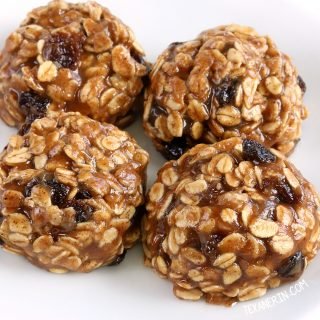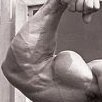Leaderboard
Popular Content
Showing content with the highest reputation on 08/29/2018 in all areas
-
Testosterone replacement therapy is steadily on the rise. The number of men prescribed TRT has tripled in the last decade. But there's still plenty of misunderstanding and flat-out backwards thinking on how it works, what it is, and what it actually involves. These are the four most common issues you need to understand before beginning treatment or dismissing the idea altogether. Done right, it may be the most significant and helpful treatments of your lifetime. 1 – It's Not Cheating This is probably the most common, and most incorrect, presumption people have towards testosterone replacement. An adult male taking doctor-prescribed hormone replacement therapy to address a diagnosed medical condition and improve his quality of life is no more "cheating" than an adult male taking doctor-prescribed asthma medication to address a diagnosed medical condition and improve his quality of life. The TRT patient's medication happens to improve lean body mass, increase libido, and have other side effects we generally consider to be positive. That's okay. People with hypothyroidism taking levothyroxine often see weight loss when their thyroid function is brought back into working order. And people on asthma meds are often able to increase their training intensity because they don't have to worry about, you know, dying during exercise. Nobody's attacking them for "cheating" because those are a simple result of the meds necessary to treat their conditions. Of course, we're talking about the general public and not professional athletes who participate in organizations that have specific rules about performance enhancing drugs. For them, cheating is a valid scenario. Potentially. Even in those cases, many sports do have (arguably generous or vague) rules for TRT exemptions for athletes who do have legitimate low T. Unfortunately, these cases are often seen with an asterisk –an athlete exploiting a loophole to gain an unfair advantage. We're also not referring to anyone who manipulates their body before getting a blood test in the hopes of influencing the results when they otherwise wouldn't qualify. If you have to temporarily alter your training, sleep, or nutrition in the hopes of skewing your blood labs to come back revealing "low T" in order to get a script written, then understand that you're not going to be on TRT, you're going to be on a low dose steroid cycle. That's a dick move and you're exactly the kind of patient who makes doctors reluctant to prescribe hormone therapy to guys who actually need it. If you don't have low T, then you don't have low T. 2 – TRT Isn't Just About Testosterone Believe it or not, it's slightly more complex than "Get doctor's prescription for testosterone, inject testosterone, live happily ever after." There are things you'll need to know, understand, and monitor every one to three months for as long as you're undergoing treatment (which is basically for life). Here's a list: Free T Total T E2 SHBG FSH LH DHT PSA TSH T3 T4 HCG If that sounds like too much of a hassle, then you're not ready to responsibly manage your condition. Be an adult and do some homework before you start manipulating a cascade of hormones in your body. The goal is to maximize health and minimize side effects, not vice versa. It would be great if we could just rely on our primary physician to handle everything for us. Ideally you'd want to hear something like this: "Okay Bill, these are the tests we ran. I don't like the look of these numbers, but this is how we'll run the treatment protocol to stay ahead of any problems. Come back in four weeks and we'll see where things stand." Unfortunately, that situation is still rare, so you need to be ready to bring your own info to the table. Even under the care of an endocrinologist or urologist, specialists who are up-to-date with the most efficient treatment methods, you are your own best advocate, and the more knowledgeable you are, the better. Cluelessly smiling and nodding (as your doctor describes why your current treatment doesn't warrant the inclusion of HCG, even though know you're having issues HCG could directly address) means you end up receiving inadequate care... and it's your own fault. The other benefit of being an educated patient is the ability to intelligently question a proposed course of treatment that doesn't sound right. If your doctor is ready to prescribe a dosing schedule of one injection every three weeks, that should be a red flag and you should discuss testosterone half-lives, blood concentration peaks and valleys, and a pre-emptive rather than reactive approach to side effects. Your other option? Don't say anything and just walk into his office on day 21 wondering why you've spent the last week more moody than a 15-year old girl and less energetic than a 95-year old guy. 3 – It's Not a Quick Fix When people think of steroids, they often think of cycles. Use them for a while, then don't use them (or use less) for a while, and repeat until swole. But TRT is not steroids. It's medication. A patient with low T doesn't "do a TRT cycle" any more than a Type 1 diabetic "does an insulin cycle." It's a treatment taken consistently to address a condition. Low T doesn't get "cured," it gets managed. It's not like an infection where you're prescribed meds for ten days and you're off of them as soon as your body is healthier and symptoms have disappeared. It's more along the lines of, for lack of a better analogy, diabetes. You have a medical issue causing problems, so you undergo long-term care for that issue. Long-term, in the case of TRT, means forever. The symptoms may improve or disappear because you're finally on the right medication to supplement what your body's lacking. It's not because the underlying source of the problem has been resolved. It may take weeks or months to adjust the proper dosing schedule and dial in consistent blood values, but from that point on, you're on a maintenance dose to literally maintain the results. TRT patients generally don't taper off or stop treatment because working with the body's hormones is a constant balancing act. Try to raise testosterone, estradiol goes up. Try to lower estradiol with an aromatase inhibitor, it works too well and E2 crashes, starting new issues that need to be addressed, repeat ad infinitum. Then add in variables like figuring out how your body responds to gels versus injections, subcutaneous injections versus intramuscular, and weekly versus twice weekly dosing. That all takes time to determine. As much as we might wish it were as simple as, "Start TRT Monday, start feeling better by Wednesday," your gut should tell you it just ain't gonna be that simple. Just like with lifting or eating better, plan to be in it for the long-haul. You don't start deadlifting and stop as soon as you pull 225 like you've reached the finish line. You don't start a fat loss plan and stop as soon as you lose a half-inch on your waist. For the best and lasting results, you stick with it and invest time into figuring out the most effective path forward. Short-term thinkers turn out to be long-term losers. 4 – It's Actually Not As Big A Deal As Most Think Yes, TRT is a significant medical treatment that involves recurring blood tests, fairly frequent injections, and a never-ending fight against potentially serious side effects. But that said, it's actually becoming more and more acceptable in the public eye. And that's a great thing. Much the same way that lifting weights has become more broadly recognized by mainstream media and the "muscle-bound athlete" myth is mostly extinct, men wanting to be hormonally healthy is seen as less of a mid-life crisis and more as part of a genuine health issue. Radio and TV commercials for TRT clinics regularly run during primetime and the negative connotations are slowly dying. People are wising up and seeing that there's more to it than just "testosterone means steroids" thinking. Judgmental Planet Fitness commercials notwithstanding. If medical marijuana can overcome vehement opposition to gradually gain nationwide acceptance, it's not unreasonable to expect that TRT will also eventually be seen as just another medication someone is taking, especially if current treatments and publicity stay on pace. This can be helped on two fronts. First, by the medical establishment who actually live, learn, and practice 21st century medicine. Doctors need to be educated on the actual risks and benefits of male hormone treatment without relying on the long-outdated textbooks they read circa 1980. Every doctor who talks their 26-year old patient out of a blood test because they're "obviously too young to have low testosterone" or who tells a 53-year old "at your age, of course it's hard to build muscle" should be chemically castrated until they learn to appreciate properly functioning hormone levels. Secondly, the public's attitude towards TRT can be helped by each individual patient. You have a responsibility to potential patients to do what you can to be a TRT success story and reduce the stigma of male hormone replacement therapy. That means understanding that you're treating a medical issue and not behaving like you're not getting "doctor-prescribed steroids." Every joke with your buddies about "finally gettin' the doc to gimme juice" and every social media post of you sticking a syringe into your leg with the caption, "Hurts so good" weakens the case for TRT to be taken seriously and encourages the dumb-meathead-using-gear stereotype. You shouldn't want to be that guy. The Bottom Line It's pretty simple. If you see TRT as just an easy fast-track to finally getting results in the gym, you're going to run into problems sooner rather than later. If you treat TRT like what it is – a medical treatment for a condition that affects your health – you're much more likely to see benefits and you'll help set the stage for testosterone to no longer be something that gets half-heartedly mumbled about at the doctor's office or joked about negatively. Testosterone, the hormone and the word itself, should be something all guys (and gals, actually) can be proud of.3 points
-
working on it sir,time for oly to come out of the grave and get working for the members3 points
-
Well said fitgm, as for myself yeah I'm not using it to build bulk or anyting I have been bodybuilding for over 25 years and I actually reached just over 200 pounds at one point at five foot two so I wanted to literally come down I have a powerlifting background of about 5 years competing and decided to switch over to bodybuilding and I have tried every diet out there and discovered fasting and I have had such good success the best success ever and I feel wonderful to on it and I've been able to maintain my muscle yes of course I've come down in size but I'm not trying to put size on anymore I just want to be healthy and basically you know I'm not getting any younger and I don't want to have that heavy weight on my joints anymore either... http://siimland.com/why-i-eat-one-meal-a-day/2 points
-
I've had a tremendous amount of success with fasting, personally, and while prepping people. Do I think it's the most optimal way to build muscle, no. For cutting on the other hand, it is HIGHLY effective. As long as your daily caloric intake is met, and you hit your required macros every day, muscle loss is not an issue. The idea that we need to eat protien every 2-3 hours or we will go catabolic or lose muscle, has long been proven incorrect. As long as you get the amount of protien, carbs and fats your body requires in each day, you will progress. Doesnt matter if its spaced out all day, or all in one meal. The human body knows what to do with the food you put inside it. Fasting through our the day means once you start eating in the afternoon/evening, you can actually get that full and satisfied feeling. Even when a guy or gal is deeeep into a diet, and calories are scarce, saving all of them for one or two big meals means a feeling of fullness and satiety that otherwise, isn't felt on a diet. Eating little meals every 2 hours all day was how I dieted for many years because that's what we were told worked. I was always hungry, always tired, and it made dieting miserable. Fasting changed the game for me and I'd suggest anyone who has a big appetite like myself, to give it a try next prep or diet.2 points
-
Here's what you need to know... Testosterone replacement therapy is as much an art as it is a science.Sadly, many doctors are crappy artists. A "normal" testosterone reading means almost nothing. You need to have total testosterone, free testosterone, and bioavailable testosterone measured to get a reasonably accurate hormonal picture. Testosterone replacement therapy (TRT) should be given based on symptoms instead of blood values. If you have no energy, gain fat easily, have trouble putting on muscle, have a low libido, and suffer from depression, you may need TRT. You have the choice of injections, gels, creams, pellets, or supplements in treating low T. However, testosterone injections give you the most bang for your buck. TRT causes very few negative side effects. TRT however, is contraindicated in men with existing prostate cancer. It can also cause an easily treatable condition where your blood thickens. Some benefits of TRT happen quickly, while others take years. Libido can improve within weeks, as can depression, but loss of body fat and an increase in muscle takes months to plateau while continuing on at a lesser pace for years. Are Your Balls Doing Their Job? So you just got the results of your blood test and your testosterone charts out at 600 nanograms per deciliter (ng/dl) of blood. You know that "normal" is somewhere between the range of 200 and 1100 ng/dl. So you breathe a sigh of relief and mentally give your balls a slap on their backs for a job well done in kicking out a reading of 600. But what does that number really mean? "Normal" Testosterone Means Zilch Unfortunately, that reading of 600 ng/dl means almost nothing. Testing for testosterone is rife with inconsistencies. Blood values of testosterone vary by the minute and the day. The only way to get a reasonably accurate reading would be to collect urine over a 24-hour period and have the lab use it to measure testosterone and its metabolites. Alternately, you could donate at least three blood samples from different times during the day. The lab would then pool the samples together and test that sample. But nobody does it that way. It's more expensive, more time consuming, and more inconvenient. Besides, the doctor would think you were nuts for even suggesting it because, really, who are you to question him, you hapless mortal, and why are you worried so much about your T levels? You should be content with vague blood readings, average testosterone levels, and at least quasi-functional balls like the rest of the sheep on the planet. And even if you did pool multiple blood samples, it still wouldn't tell you much. For one thing, even though the results might indicate that you have a normal level of testosterone, it might not be normal for YOU. Maybe you would've measured a high octane 1100 when you were in your twenties, but now you're sputtering along at a comparatively low octane 600 and spend your days Facebooking, or it's offline equivalent, scrap booking. The only way you'd know what was normal for you is if you'd established a testosterone baseline reading before you turned 30. But again, nobody does that. The Other Players: SHBG and Estradiol Then there's the issue of steroid hormone binding globulin, or SHBG. It's a glycoprotein that literally binds up the sex hormones, including, on average, about 60% of your testosterone, and that percentage keeps climbing as you grow older. The more SHBG you have, the more of your testosterone is bound up, leaving less of it free to do all the good stuff. So while your testosterone level may be 600, a good portion of it is locked up. It can be maddening. It's like having a genie in a bottle that you can't uncork. That's why, at the very least, when trying to determine your T levels, doctors should ask the lab for your total testosterone levels, your "free" testosterone levels, and your "bioavailable" testosterone levels so you can get a little bit better of an idea of what your situation is. But, you guessed it, nobody does that, at least very few conventionally trained doctors. And we can't forget about estrogen, or more specifically, estradiol levels in men. Your testosterone levels may read normal, but if estradiol levels are high, it could thwart testosterone in its efforts to make you the man you're supposed to be. As you can see, determining normal testosterone levels is a tricky beast. So, regardless of what your lab values are, and given the problematical nature of the lab tests, you have to instead rely on symptoms and the simple desire to be more than you are, hormonally speaking. The Symptoms of Low T Do you have less energy? Have you experienced an inexplicable increase in body fat and have trouble losing it? How about a loss of muscle tone and an inability to make progress in your workouts? Does your erection sometimes falter and wane? Do you think more about your lawn than lady parts? How about premature aging? Difficulty in concentration or memory? Depression? Or maybe a lack of "appropriate aggressiveness" where you don't take the initiative in matters of business or the heart? Maybe you're nervous, or always pissed off, ready to tear the head off the pudknocker in line in front of you who bought the last damn cinnamon roll? Any of these things could be indicative of low T, including, seemingly paradoxically, that last item on the list about undue anger levels. Historically, low testosterone, or hypogonadism, has largely been a problem of middle age and beyond. A 2006 study reported that 39% of men over 45 suffer from it. Another study said that while 13 million men in the U.S. may be deficient in testosterone, fewer than 10% get treatment for it. That's quite a chunk of human change, but consider that these statistics reflect only those men that were clinically deficient, i.e., their lab tests indicated they were low. It leaves out the millions – many who are young or relatively young – whose lab tests say they may be fine but based on their symptoms, are probably deficient. It also ignores the younger men who don't typically get their T levels tested. Millions of them are likely deficient, too. Not because of old age, but because of environmental estrogens, pituitary and testicle stifling chemicals in general, and probably even a soft, cushy, modern, convenience-filled low-testosterone lifestyle. In fact, it's speculated that the testosterone levels of today's average man are roughly half of what his grandfather's were, at a comparative point in life. Get the Right Lab Work Done Your first task is to find a progressive doctor, or at least one who isn't threatened by a patient who knows what he wants. Luckily, there are now plenty of low-testosterone treatment centers around the country. Unfortunately, many of them are in it for quick dough and they aren't likely to be as informed on the topic as you'd like them to be. All the more reason for you to take charge. Once you find the right doc, describe your symptoms, confess your desire to get testosterone replacement therapy, and ask for lab work. But make sure you get tests done in exactly the way specified below. (For instance, if you don't ask for a "sensitive assay" estradiol test for males, they're going to measure your estradiol the same as if you were a ballerina from the Bolshoi ballet suffering from menstruation problems.) Ask for this lab work: Testosterone, total Testosterone, bioavailable Testosterone, free Estradiol (sensitive assay) Steroid Hormone Binding Globulin Follicle Stimulating Hormone (FSH) Luteinizing Hormone (LH) Dihydrotestosterone (DHT) Complete Blood Count (CBC) Prostate Specific Antigen (PSA) Blood Chemistry Panel Metabolic Panel These tests will give a fairly good baseline reading of where you stand so that when you have follow-up blood testing done three to six months later, you can see if you're on the right dosage and whether you're suffering any insidious negative side effects. What Are Your Choices For T Replacement? If you test out as deficient in testosterone, or if you have symptoms of low testosterone, you likely want to do something about it. There are definitely over-the-counter supplements designed for this very purpose. (Alpha Male® and Tribex® are the most potent.) And while effective, they're best used by healthy younger men who want a boost in T levels for bodybuilding purposes. They probably aren't the best choice for men who are clinically low and who've made the choice to undergo what's usually a lifetime commitment to testosterone replacement therapy, or TRT. 1. Testosterone Injections Testosterone injections are the creme de la creme of TRT. While it's true that testosterone gels (see below) create a more natural ebb and flow of testosterone, injections, provided they're administered properly, give you the most muscle-building, libido boosting, rock-your-world bang for the buck. You essentially have two injectable choices in America, testosterone enanthate and testosterone cypionate. The half lives of these esters differ slightly, but it's not that big a deal, especially if your dosing is adequate and you've chosen a suitable injection method and schedule. For most men, 100 mg. a week of either ester is enough for effective TRT. However, some men need less and some men need more, possibly up to 200 mg. a week. Beyond that amount and you're pretty much on a mild bodybuilding steroid cycle instead of testosterone replacement. Even if you're injecting weekly (always on the same day), you still might suffer a bit of a low-testosterone lull as you get further away from injection day. To remedy this, many men split their dosage in half and inject twice a week instead of once a week. Doing so keeps your blood levels of testosterone fairly stable. And while many men micromanage their hardest workouts to coincide with the peaks and troughs of their TRT, it's largely an unnecessary battle, especially when you're giving yourself two injections a week. Injections given that close together ensure that you're pretty much always riding a peak. Additionally, you might want to consider subcutaneous injections rather than intramuscular injections. Dr. John Crisler, noted testosterone guru, insists that sub-q is much more effective, so much so that 80 mg. of testosterone injected under the skin is equal to 100 mg. injected intramuscularly. Plus, he adds, you don't poke your muscle bellies full of thousands of holes over the course of a lifetime of TRT. All you do is take a pinch of skin on your glute, thigh, or even belly, and inject a tiny needle into the fold at either a 45-degree or 90-degree angle. Fully depress the plunger, release the skin, and you're good to go. Whether Crisler is right about the potency of sub-q injections isn't known for sure, but it has the ring of truth and it's worth a try. 2. Testosterone Gels As mentioned above, testosterone gels provide a much more natural androgen rhythm and there's probably some argument to be made that mimicking the body's natural rhythms is the way to go. However, many believe it doesn't have the same bang for the testosterone buck as injectable esters. Besides, gels have their drawbacks. You should only apply gels to freshly showered skin. You should refrain from swimming or working up a sweat for at least an hour. Furthermore, you can't, under any circumstances, let a child or female (especially a pregnant one) come into contact with the treated area until it's absolutely dry. If you do decide to use gels, you must apply them once (or in some cases, twice) a day. Don't use your hands to apply the gel, though. Any gel on the hands doesn't soak in to the bloodstream. It's like applying gel onto an old catcher's mitt, which isn't very permeable. Instead, squeeze the gel onto your forearms and rub them together. That way you won't waste any. 3. Everything Else Just about everything else, including creams, pellets, and sublingual drops, isn't much worth discussing. Granted, creams can be effective, but they're messy and they don't penetrate the skin as well as gels. Pellets and drops, however, are either ineffective or impractical and make accurate dosing all but impossible. There are, however, other protocols that have proven to be effective in treating secondary hypogonadism (where the hypothalamus, for whatever reason, isn't telling the pituitary to produce LH and FSH, which in turn cause the testicles to produce T), like selective estrogen receptor modulators, or SERMs. Two of the most commonly known ones are Clomid (clomiphene) and Nolvadex (tamoxifen). They simply trick the pituitary into producing LH, which then tells the testicles to get to work. Exact protocols are beyond the scope of this article, though. TRT, Your Testicles, and HCG One of the big fears about undertaking TRT is infertility and shrinking balls. While TRT does reduce the number of sperm that a man produces, it'd be foolish to think that your replacement dosage has rendered you safe from becoming a daddy. In many cases, though, the testicles will shrink and sperm count will drop, but these effects are easily prevented by concurrently administering human chorionic gonadotropin, or HCG. The drug mimics LH so that your testicles don't shut down. They'll still produce sperm and they'll still produce testosterone, so shrinkage won't occur. Additionally, there are LH receptors throughout the body, and HCG attaches to these system-wide receptors. Anecdotally, at least, this causes men on TRT and HCG therapy to report feeling pretty damn good. HCG is administered subcutaneously via an insulin needle and it's easily available to your doctor through various compounding pharmacies around the country. The generally recommended starting dose is about 100 iu a day, working up to higher daily doses or, alternately, 250 or 500 administered twice a week. The Potential Negative Side Effects of TRT There are a small number of bad things that can happen when on TRT. One is only an issue if you have prostate cancer before starting TRT therapy. Note that there's absolutely no evidence – even after researchers have compiled thousands of studies and patient histories – that TRT can cause prostate cancer. However, for some reasons that we don't totally understand yet, TRT can make prostate cancer worse. That's why it's important to have digital rectal exams (DREs) every year while continuing to monitor prostate specific antigens (PSA). TRT can also cause a condition called polycythemia, which simply means that the testosterone therapy has caused your body to produce too many red blood cells. Instead of freely flowing through your veins, your blood gets thick and spurts along like the stuff that comes out of the Dairy Queen soft serve machine and it can understandably cause heart attacks and strokes when it clogs up your plumbing. That's why it's important to monitor both hemoglobin and hematocrit. If hemoglobin exceeds 18.0, or hematocrit exceeds approximately 50.0, you either need to adjust your dosage of testosterone, donate some blood to the Red Cross, or submit yourself for what's called therapeutic phlebotomy (a simple blood draw in a doctor's office). What About Gyno and Heart Attacks? The much-dreaded gynecomastia is almost unheard of in males receiving TRT. Gynecomastia, or the growth of male breast tissue, is seen almost exclusively in men taking pro-bodybuilder levels of testosterone (1,000 to 3,000 mg. a week) or testosterone analogs. Hair loss is a possibility, but it seems to stabilize in your 30's. If you've made it that far without losing your hair, it's highly doubtful that TRT will make things any worse. All of the rest of the stuff you may have heard about testosterone causing heart attacks or anything else bad is horribly, horribly wrong. If anything, men with low testosterone levels are much more prone to a host of maladies, including heart disease, diabetes, dementia, and pretty much everything else usually associated with old age, death, or decrepitude in males. What to Expect from Testosterone Replacement Therapy Testosterone does cool stuff to the body, but it usually doesn't happen overnight. While you might start feeling pretty good, almost elated, after starting therapy, the various physiological benefits take varying amounts of time. Sexual benefits. These kick in fully at about week 3 and plateau between weeks 19 and 21. Depression. If it's a factor, depression often starts to lift by about week 6, but maximum benefits take longer. Anxiety, sociability, and stimulation of the cerebral cortex (the part that controls attention and even creativity). These start to improve at about week 3, plateauing about 3 months after beginning therapy. Insulin sensitivity. Starts to increase in just a few days, with effects becoming evident (less body fat) in 3 to 12 months, but often continuing for years. Increased muscularity. This is highly dependent not only on having adequate testosterone levels, but genetics, diet, lifestyle, and training. However, generally speaking, testosterone therapy can positively affect muscularity in as little as a month, peak at about a year, and then continue at a slower pace for some time. The good life. And then there's the intangible benefit known as life enjoyment. It's what you often get when you combine all of testosterone's benefits, the physiological and the psychological, into one. It can't really be measured, but it's oh-so valuable. Just make sure you find a doctor that understands that.1 point
-
1 point
-
Prep Time: 5 min Cook Time: 5 min Ready in: 10 min Yield: 10 cookies See the notes below for the chocolate chip version! Ingredients 3 1/2 tablespoons (49 grams) coconut oil 1/2 cup (128 grams) natural almond butter (the kind with just almonds and no added fat or sugar) 1/2 cup (120 milliliters) maple syrup1 1/4 teaspoon salt (if your almond butter is salted, you may want to reduce or omit the salt) 1 1/2 teaspoons vanilla extract 1/2 teaspoon cinnamon pinch of nutmeg 1 1/2 cups (138 grams) Bob's Red Mill Gluten-Free Organic Old-Fashioned Rolled Oats(regular rolled oats also work) 3/4 cup (150 grams) raisins or (128 grams) mini chocolate chips (make sure to use vegan chocolate, if necessary) Directions In a medium pot, stir together the coconut oil, almond butter, maple syrup and salt. Turn the heat to low and stir occasionally until the coconut oil is melted. If your coconut oil has been chilled or is very hard, melt the coconut oil in the pot before adding the other ingredients. Turn the heat up to medium, and while stirring constantly, bring the mixture to a full boil. Boil for 2 minutes, stirring constantly and adjusting the heat as necessary (you might want to turn it down a little). The mixture should become glossy. Don't boil it longer or it may separate. Remove from the heat and stir in the vanilla, cinnamon and nutmeg and stir. Stir in the oats and raisins until well combined. Use a medium cookie scoop to scoop out balls of the mixture onto a piece of parchment paper. They'll firm up after a few hours at room temperature (provided your home isn't super warm) or you can chill them to firm them up quicker. Store in an airtight container for up to 3 days. They can also be refrigerated for up to about a week. For firmer cookies, refrigerate them. If you want to take these out as an on-the-go snack and it's especially warm, you'll probably want to refrigerate them first. Notes I've tried these several times with honey and the texture comes out totally different and not in a good way. The cookies also taste overwhelmingly of honey. Whether brown rice syrup, agave or other liquid sweeteners works, I don't know as I haven't tried them. Granulated sweeteners will not work. For a chocolate chip version, omit the cinnamon, nutmeg and raisins. Once everything is mixed together, let it cool almost to room temperature so that the heat won't melt the chocolate chips. Stir in the chocolate chips. You could also form them into cookie shape and then sprinkle the chocolate chips on top once the cookies have mostly cooled.1 point
-
So this is just my experience with omad fasting I have tried every single diet out there to try and get shredded and size for me is not a problem I put size on like nothing I am five foot two and usually in off-season I'm over 200 pounds... but I have a powerlifting background I did power lifting for about 5 years and then I switched to bodybuilding which I've been doing well over 25 years now. So I've done the bodybuilding diet that you eat 5 meals a day which you no work for a little bit but still I really didn't see a lot of good results and then I came across an article about fasting which was the 16 to 8 intermittent fasting which I started doing and actually saw more results than I've ever seen with any other diet that I've been on. Then once again I decided to switch to the omad fasting after doing even further research and doing the one meal a day which for myself I thought was crazy because how the heck are you going to have all this energy in the morning to train or do anything but mentally I've never had more of a clear focus and more energy than I even know what to do with when I train I've had some of the best training sessions to date. So I am now under a hundred and seventy pounds and much more shredded and with abs than I've ever been and absolutely loving it. So I just wanted to share my experience with the omad diet... Musclebeauty1 point
-
I had my mind set on comeing off, been on a teeter-totter about it actually! But I think you have put the finale nail in the coffin, when when I’m done this cycle end of September, I well start hcg and clomid then hopefully sometime in 2019 I’ll have healthy swimmers! Expect a pm from me in he next day or so brother I may have a few questions where you have real world experience like I was looking to find with the post! Thank you1 point
-
Out of any of you guys giving the advice to stay on gear have actually done this and had it work for you? I can tell you that it did not work for me and I gave it a good solid effort with copious amounts of Pharmacy HCG for 8 months. I was on prescribed TRT and wanting to have another child, my doctor told me that I should come right off but of course I didn't want to. I had done countless hours of research and read all about HCG being able to keep you fertile and was able to convince my doctor to let me try with the HCG first. I had a semen analysis before and then after 6 months of HCG and TRT and the sample actually came back lower..... I immediately stopped TRT after getting the results of the analysis. After stopping the test and HCG I did HMG for 12 days and then low dose clomid for two months. The wife became pregnant exactly 3 months after stopping the testosterone....the exact maturation length of new sperm..... If you're serious about getting the wife or girlfriend pregnant then don't mess around, just come off man. If you have any questions about anything just ask or even on pm me.1 point
-
1 point
-
NAC 600mg Magnesium Bisclycinate 500mg 3x Omega 3 720 EPA/DHA Coenzyme Q10 200mg Zinc Gluconate/Citrate 100mg That's my year round stack whether I'm on our off, I'll increase NAC to 1200mg during cycles. Magnesium really helps with muscle cramps that I get post workout. Well eliminates them completely. Also helps with sleep, muscle recovery and heart health. Bisclycinate is important because I'm not looking for a laxative. EPA/DHA too much science not to take. Coq10 cheap and some solid science behind it. Zinc helps with my strength and muscular recovery. Noticeable improvements. I'm very skeptical of supplements but always open to try something if there is enough science behind it.1 point
-
Used their Accutane about a year and a half ago while still in Canada my regular source for HG tane was out and I was in bad shape on a big run of test tren and mast getting ripped up for beach in Colombia. I took a chance and got fucked. Of course the lab is like its not a "miracle drug" and "bro you need to come off and reset your receptors" " our stuff is top quality" Well I have used HG tane before and I get bloods monthly and I know exactly what my liver values are on 20 mg per day or 20 mg EOD. On 80 mg of trans my liver values did not move from the standard regular range they always are with no orals in the mix. Went to COL walked into a pharm bought a box of 20 mg roccuatine over the counter and 5 days later was clear as a bell 8 days later bloods showed liver enzymes exactly where expected. Talk aint cheap when you have been around the lifestyle for over two decades and get regular bloods and can compare real pharm products to ugl products on a regular basis. All the lab had to do was say sorry bro we must have got some bad raw's or shit sat around for a while and lost potency ect. Nope it was reversed on me to make me the culprit in the whole thing like I was some noob or a simple Forrest fucking Gump type. I was not even looking for a fix up just giving them a heads up of the issue. There is a lot of gym rats out there that think they got the magic shit in a bottle when they are growing and growing. Anyone with experience knows that 250 mg of test a week is about 3 times normal healthy production for a young guy and you will fucking grow with diet and training in check. So a lot of times that 500 a week is really only 250 which is still enough to grow really well. A lot of people would shit themselves if they were taking a real gram of test which is 720 mgs hormone of test e or 690 mg of hormone in test c. There are labs up there that do put out such products for potency and consistency pretty regular. Yeah sure they are at the mercy of raw suppliers product quality but always seem to not have too many serious issues and always fix the ones that do pop up in a professional and expedient manner. The aforementioned in this thread ain't one of them There is a shit ton of more info out there on bad bloods and customers being told to " fuck off" buy one rep in particular because of issues. Research is always key. My personal opinion this lab is "Una jodida fábrica de payasos" G1 point
-
Add me to another proponent to intermittent fasting. I've done the 16/8 fast for each of my cutting cycles over the past few springs. The first week is a bit of a challenge as you get used to being hungry.. but after a while you don't even notice. I haven't tried the OMAD fast yet. Reminds me of the warrior diet that was being touted a few years back. Although I have done a 24 hr fasts. Just not on a daily basis. Worth a try. Great topic!1 point
-
1 point
-
1 point
-
1 point
-
You’re welcome. I actually have a few women asking me for advice so any info for woman I come across I’ll share ill try to get them to join up ive had good success with the gf she “popped her cherry” with 25 mg of Ostarine for 4 weeks, and is running var at 10mg for another 4 weeks, after that’s done she wants to keep going so I’m thinking flip her back to 25 mg Ostarine and add cardarine and sr90091 point
-
1 point
-
I just finished 4 weeks of acupuncture (2/week). Made a huge difference...85% better. However, no alcohol and no heavy lifting during the 4 weeks.1 point
-
some naturalpaths do but i am speaking to someone who actually can do all thew testing here in canada.he does exact testing that the big labs do out there. and it would be a domestic sourece,strictly for this board1 point
-
1 point
-
I'm always leery of chiming in on dbol topics because I might get roasted for spouting nonsense. BUT: 20mg/day spikes my blood pressure like crazy after a week. And even taking it pre-workout only 20mg gives me insane pumps+cramps that make it hard to drive home from the gym. 10mg pre-workout and I still pump up like a bicycle tire in my workout, but I'm definetely fuller, with a decent strength bump after a couple of weeks. Damn, talking about it now kinda makes me want to crack open all this dbol I have saved up for a rainy day.1 point
-
1 point
-
Thanks for replying, I'm noticing alot of people take low dose of aspirin I'm assuming baby aspirin?1 point
-
Ohhh, these are deadly!! I make these too pretty much the same, I just add some ground flax seed to mine as well. I flatten mine a bit and then I freeze them and then eat them frozen. They're so good and they take a little longer to eat so that way you don't eat too many at once.1 point
-
The answer to your post is Yamaha. Yamaha makes the best sleds ?1 point
-
I pinned Genetec tren ace on Sunday and got the cough for the very first time.. Lasted about 30 seconds.. but wow! I've read up on lower test/ higher tren cycles and how people experience the benefits of tren without some of the sides... Or lesser sides. I just added tren to the back end of my test-e/Mast-e cycle. I've only done tren-e before but I can tell a definite difference between the two. I'm already experiencing "tren-somnia", and night sweats. All the things I felt about 6 to 8 weeks in on tren-e. So I've been running 250mg/wk of test-e and 400mg/wk of mast-e. I've added 100mg tren-a EOD with 50mg of anavar ED and this week switched the test-e to test-p. In about 2 weeks I'll switch from anavar to wintrol for the remainder of my cycle. I'm using all different labs really. All ones I trust. I'm using the Genetec tren-ace i got a few months back. Love their products. Out of the labs I've used, their near the very top.1 point
-
Currently on 1.25ml of test e 250, 1.25ml of tren e e5d and 20mg superdrol. Can honestly say this have been one of my favourite cycles to date. Not a height mg as most of my other cycles, but turning out to be my favourite run to date!1 point
-
1 point
-
1 point
-
Loving it! I like having the E as a base and tuning it up with the Ace. Might bump the Ace to 400 for Sept cuz it's going really well. Can't say enough good things about this. Pinned my quad the other day and aspirated, got 1cc Ace + a little Mast in nice and smooth, pulled out the pin and then it hit me like a freight train: Tren-Cough of Death! This stuff is potent and if it wants to get you it'll strike like a1 point
-
1 point
-
1 point
-
1 point
-
I will follow, nice cycle. I like the added libido bonus from proviron. I would consider bumping EQ to 900 mg a week and keep test at 500-750 mg a week.1 point
-
maybe the mrs can fix the hard situation you got going here P.S only if you had some priligy1 point
-
1 point
This leaderboard is set to Toronto/GMT-04:00









